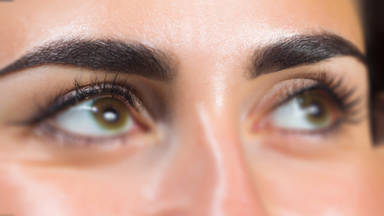
As with any color, bleach can be harmful. When your hair is continuously bleached, it loses its natural moisture, becomes brittle, dry, and prone to split ends. Many of our readers have been asking us about natural methods of lightening their hair. In this article, we will show you safer and less risky ways to lighten your hair at home without risking bleach mishaps.
To begin with, you need to determine what type of hair you have, as well as whether the hair is strong and healthy enough to undergo this procedure. It is common for people to have previously dyed their hair wine or black. If this is the case for you, only bleaching will allow you to lighten your hair.
After dyeing with a hard color, the hair will continue to be damaged, and the only solution is to use a color remover. A general process for removing hard color from hair involves removing the old color from the hair and then bleaching it to a certain level, as long as the hair can tolerate it. This is the general process used for hair with hard colors on.
Other types of hair, such as hair with natural colors, or even hair that has a principled dye can be dyed using a two-phased-dye procedure. Usually, using a single phase dye won't give you the results you want. The best results will be achieved if your hair is healthy and natural.
The procedure
When lightening hair, you should never begin by the roots, because the roots of the hair lose color too quickly and consequently the result will be an uneven color. Instead, you should begin at the stem, approximately one centimeter away from the root, and then add lighteners such as triple zero dye and 12/1 and 12/2 colors.
You will use lighteners and 12 percent oxidants on the hair, 1 centimeter away from the root. Only healthy hair should be treated with this amount of oxidant, not damaged or dyed hair. Furthermore, if your hair is healthy, you can add one teaspoon of decoloring powder. For short hair, one teaspoon is enough, for medium hair two teaspoons, and for long hair one whole spoon.
The lightening power of your formula can be increased by mixing decoloring powder with 12 percent oxidant. It is possible this way to lighten the hair to level seven without using bleach, even if it is thin. Don't forget that you need to do this on the stem instead of the root. It takes thirty minutes for the formula to take effect on the stem.
When treating the root, use an oxidant that has nine percent oxidant and no decoloring powder. The root is closer to the skin and warmer, so the product will work more effectively.
In order to avoid burning tissues, you must avoid mixing oxidants with decoloring powder for hair roots. However, If you use the formula above, you will not have any issues lightening the roots of your hair. Wait twenty minutes after applying the product to the root.
Continuing with the second phase
Once the hair is rinsed and dried after the first phase, you need to determine how lightened it has become. Depending on the lightness level and the person's preferences, you can choose the right color. When the color is lightened to a level seven, for instance, a chocolate color shade or a natural color shade in that level would be ideal.
Once the color has been chosen according to the level of lightness, the product can be applied to the hair and simultaneously to the hair roots. Because the roots are already lightened, you won't need to add the product one centimeter away from them at this point.
The product should be applied beginning at the root and working out to the stem's end. Let the formula sit for thirty minutes, then rinse and brush the hair. A two-phased dye procedure for healthy hair is concluded with this step.
Lightening damaged hair
It's common for people to have bleached or dyed hair. They might not have taken enough care of their hair over the years. Thus, these hair types are no longer suitable for the previous method since their resilience has been lost and their thickness has decreased. In this section, we will explain how to apply the two-phased dye to slightly damaged hair or hair that has been dyed multiple times.
A slight variation can be made to the same technique. In light of the hair's slight damage, using a 12 percent oxidant is not recommended. However, you can still use any lightener in your color catalog, including triple zero, 12/1, and 12/2.
Hair should also be treated with 9 percent oxidant, or 12 percent oxidant if the hair is thick. Decolorizing powder should never be used on hair. If the hair isn't too damaged, you can also add a bit of decoloring cream.
Wait thirty minutes before adding the product to the roots. For the hair roots, you should use your lightener along with 6 or 9 percent oxidant. Use the nine percent oxidant without the cream if the stem has been lightened by a formula that contains decolorizing cream. Otherwise, use the six percent oxidant level because the root should need a weaker oxidant. Having completed this, you have just completed the first dyeing phase.
Second phase
The process for the second phase is the same as for the healthy hair. Your choice of color in the second phase depends on the level of lightening and the shade you achieved in the first phase. Select the right hair color and mix it with six percent oxidant. In the same manner as in the previous method, both the root and stem can be treated simultaneously with the formula. In the final step, the hair will be dyed from root to tip, similar to a regular dye job.









